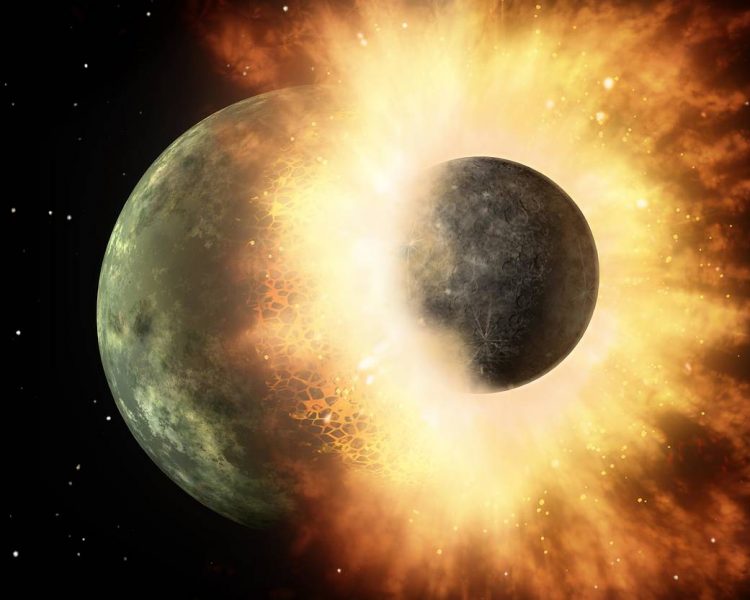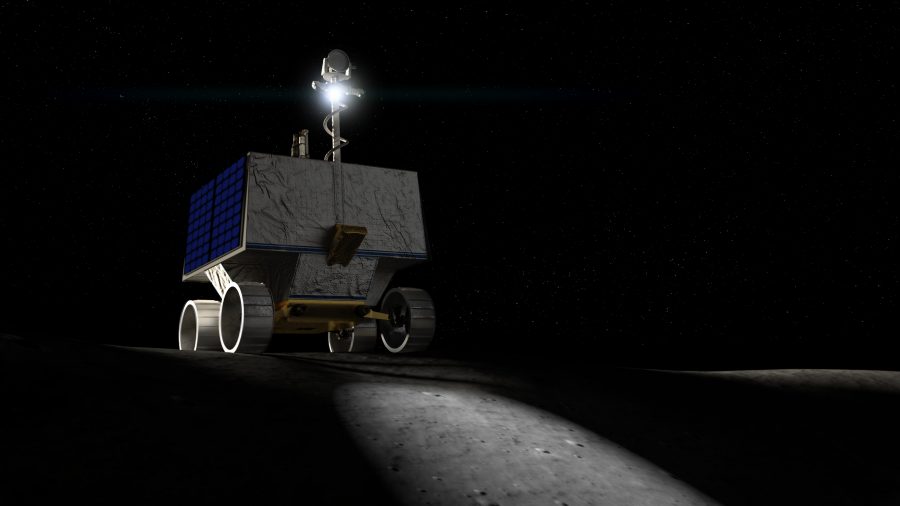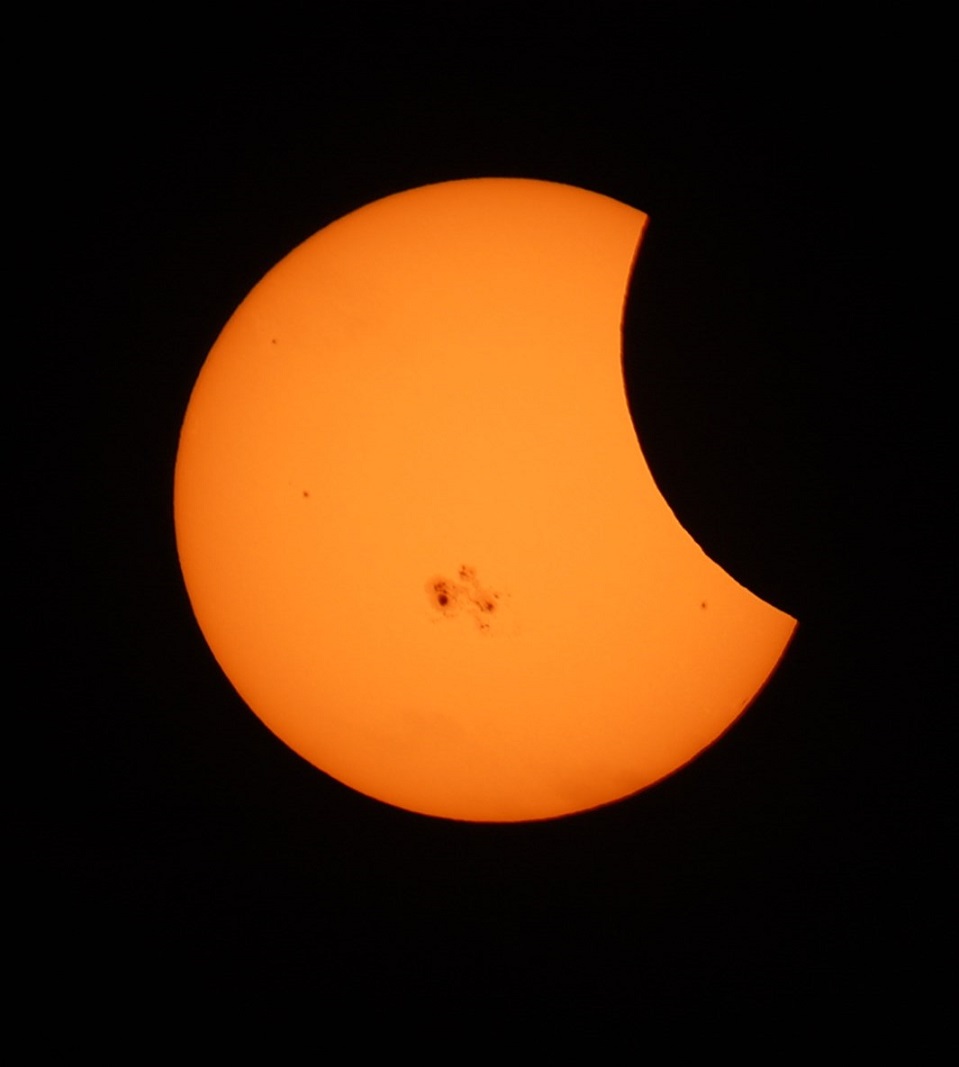A “smoking gun” for the ancient calamity that formed Earth’s large Moon may still exist deep in the mantle of our planet.
Updates:
(November 2, 2023) Qian Yuan (Arizona State University) and colleagues have now published the work described below, showing that bits of Theia (the giant impactor that helped create the Moon) survived for billions of years as two huge, dense blobs within Earth's mantle. In the November 2nd Nature, the team published updated work that includes significant additional computer modeling of both the impact itself and the motions within Earth's mantle to make that case.
Yuan points out that, according to the simulations, the collision didn't melt Earth's whole mantle."The lower half of Earth's mantle is mostly solid, and it captures an amount of Theia's mantle (about 2% of Earth's whole mass)," he says, adding that this amount is consistent with the blobs found in the mantle. "Thus, both the ancient planetary evidence and current Earth observation agree with each other that the two blobs likely originated from the impactor Theia."
Original story, published March 30, 2021:

NASA / JPL-Caltech
Evidence for the past impact that created our one large Moon might lie far beneath our feet.
Researchers out of Arizona State University (ASU) made their case in a great piece of planetary forensics presented at the virtual 52nd Lunar and Planetary Science Conference. Their study posits that the large Theia impactor that struck Earth early on in its history, leading to the Moon's formation, might have left large, dense masses deep in our planet’s mantle today. The study will appear in Geophysical Research Letters.
The Theia Hypothesis
The leading theory for the formation of the Moon is that a roughly Mars-size object, dubbed Theia (named after the Titan mother to the Moon goddess, Selene), struck young Earth around 4.5 billion years ago. The abundance of indirect evidence for this cataclysmic event includes the high angular velocity seen in the Earth-Moon system today, as well as the Moon's tiny iron core and high mass ratio relative to Earth. Stable isotope samples brought back by Apollo astronauts also suggest a common origin for Earth and the Moon.
But direct evidence for Theia hypothesis has so far been lacking. While the cores of Earth and Theia probably merged right away, where did the rest of the rogue impactor go?

Sanne Cottaar / Wikimedia Commons.
Graduate student Qian Yuan (ASU) and colleagues looked at continent-size features deep in Earth’s mantle, known as large, low shear velocity provinces (LLSVPs). These two large masses, 1,000 kilometers tall and several thousand kilometers wide, sit on either side of the Earth’s core like a giant set of earmuffs, one under Africa and the other under the Pacific Ocean.
While seismic waves traversing the interior of our planet have revealed these denser regions of the mantle, their origin remains unclear. There are a few different ways in which the LLSVPs might have formed, but the ASU team suspected they could be the remnants of Theia.
Recently, geologists sampled volcanic rocks in Samoa and Iceland, thought to have come from the deep mantle based on chemical studies. Based on those samples, the LLSVPs date back to at least 4.45 billion years ago — right around the time of the suspected Theia impact event.
Yuan and his colleagues simulated the impact and followed the evolution of Theia’s remains over time. They found that the its mantle was denser than Earth’s, so rather than mixing in, it piled up at the bottom of the mantle against the outer core.
The simulations suggest that Theia might have been much larger than previously suspected, perhaps four times as massive as Mars, and denser too. The Apollo samples support the high density. Lunar rocks exhibit a relatively low ratio of heavy hydrogen (deuterium) to light hydrogen, from which the team calculates that Theia's mantle must have been between 2% and 3.5% denser than Earth in order to retain the light gas. This estimate is consistent with the high density required by their simulations.

Qian Yuan / ASU
Lumps in the Gravy
The fact remains, though, that we still don't understand the exact nature of the LLSVPs. “We don’t know what they (the LLSVPs) are,” says seismologist Jennifer Jenkins (Durham University, UK), who was not involved in the study. “They could be piles of subducted oceanic tectonic plates, iron enriched remnants of a basal magma ocean from early in Earth’s history when the mantle was still cooling and solidifying, or closely spaced hot thermal upwellings within the convecting mantle that get blurred together into one big ‘blob’.”
Part of the problem is that the primary method for studying LLSVPs involves examining low-frequency seismic waves, but these paint a fuzzy picture. The masses deep within our planet might be riddled with structure. “There may be holes in them,” seismologist Barbara Romanowicz (UC Berkeley) told Science. “There may be a bundle of tubes.” If so, it could throw the Theia-remnant assertion into doubt.
New techniques, such as utilizing the Moon's tidal pull on Earth, may eventually help narrow down the LLSVPs' structure.
Future lunar sample returns may also help settle the mystery. The Apollo missions sampled equatorial sites on the lunar nearside, but doubts linger over the deuterium-to-hydrogen ratio measured there, mainly due to possible interaction with the solar wind. Scientists would like to resample in the South Pole-Aitken basin, near the lunar south pole. A later impact might have exposed mantle on the basin floor, so it's an ideal site for pristine samples of the lunar interior.
China's Chang'e 4 mission is currently exploring Von Kármán Crater within the basin, and a south pole site will also be the target for NASA’s VIPER rover launching in 2023. The crewed Artemis initiative could also pay it a visit in coming years.

NASA
“It would be great to go to the Moon and test whether magmas ‘erupting’ from deep within the Moon record a low deuterium/light hydrogen signature,” says team member Steven Desch (ASU). “The right samples would settle the debate one way or the other.”
 0
0









Comments
You must be logged in to post a comment.